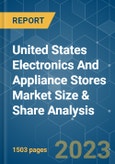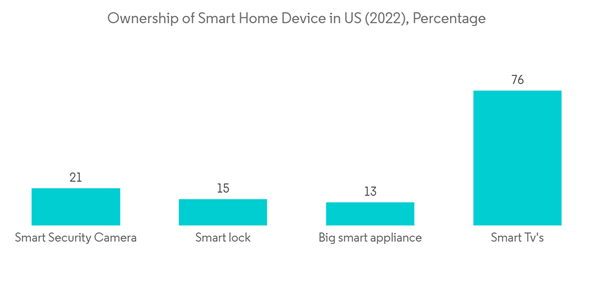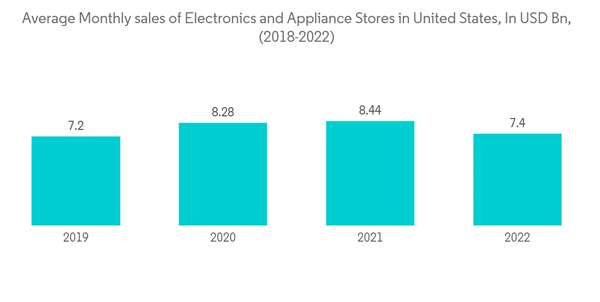The electric appliance market over the period had focused on energy-efficient products and shifted towards sustainable and eco-friendly products. Enabling AI and IOT in electric appliances is revolutionizing the market with new features and controls.
With the advent of COVID-19, there arose a problem of supply chain disruptions in electrical appliances. As with the advent of COVID-19, consumers were spending more time at home, and a need arose for replacing or upgrading their appliances. Freezers and washing machines were among the appliances observing an increase in demand. With COVID-19, the frequency of use of electrical equipment observed a continuous increase; the use of washers and dryers was up by 25%, and the sanitizing cycle on washers was up by 85%. As a result, demand for equipment exceeds supply, causing delivery delays to customers.
As the economies are recovering and supply chains are recovering. Electric appliance stores are observing a steady state between the supply and demand of electric appliances. With the continuous recovery of sales in June 2021, monthly sales of electronics and appliance stores reached USD 8.50 billion, recovering from a decline of USD 3.50 billion in April 2020.
US Electronics & Appliance Stores Market Trends
AI And IOT Enabled Electronic Appliance DrivingUS Electronics and Appliance Stores Market
As firms compete with each other for providing advanced and more comfortable products, AI and IoT are among the innovations that have been incorporated into electrical appliances. Through this innovation, stores are now making available smart washing machines, refrigerators, speakers, and TVs. Similarly, for security systems, there is the availability of a door lock system and a smart camera, and for remote assistance, energy saving, baby monitoring, and robotic cleaners have evolved.Televisions equipped with AI and IoT technologies were among the smart home devices having the highest penetration rate in 2022, while other devices still have a large gap to be filled.
Large Customer Choice Base Increasing Product Varieties And Sales Of Electronics And Appliance Stores.
During that time, a lot of companies got into the business of making electrical appliances.A wide variety and range of electrical appliances are available in US stores as per customer needs. For people with a high level of income, the latest technology appliances that cost a lot have been made available, and for low-income groups, existing technology appliances have been made available. This increase in the variety of products available has increased the movement of people to electrical appliance stores to buy a product that suits their needs and their pockets.With this wide variety of product availability, monthly sales of electronic appliance stores in the US observed a recovery after the negative impact of COVID-19 on the market, reaching an average monthly sales level of USD 8.44 billion in 2021. Personal care and electrical appliances observed retail sales of USD 7.5 billion in 2022, indicating a demonstration effect of an increase in their sales from stores as well.
US Electronics & Appliance Stores Industry Overview
Panasonic, GE Appliances, Aqua, Haier, Whirlpool, Bosch, Midea Group, Hitachi Limited, Candy, Philips, and Toshiba are among the players existing and operating in the United States electronic appliance store market. The stores are focusing on their distribution channels-online, specialty stores, and multi-branded stores-to increase their market share and occupy a large segment of consumer demand.Additional Benefits:
- The market estimate (ME) sheet in Excel format
- 3 months of analyst support
Table of Contents
Companies Mentioned (Partial List)
A selection of companies mentioned in this report includes, but is not limited to:
- Panasonic
- GE Appliance
- Whirlpool
- Bosch
- Hitachi Limited
- Candy
- Phillips
- Toshiba
- Haier










